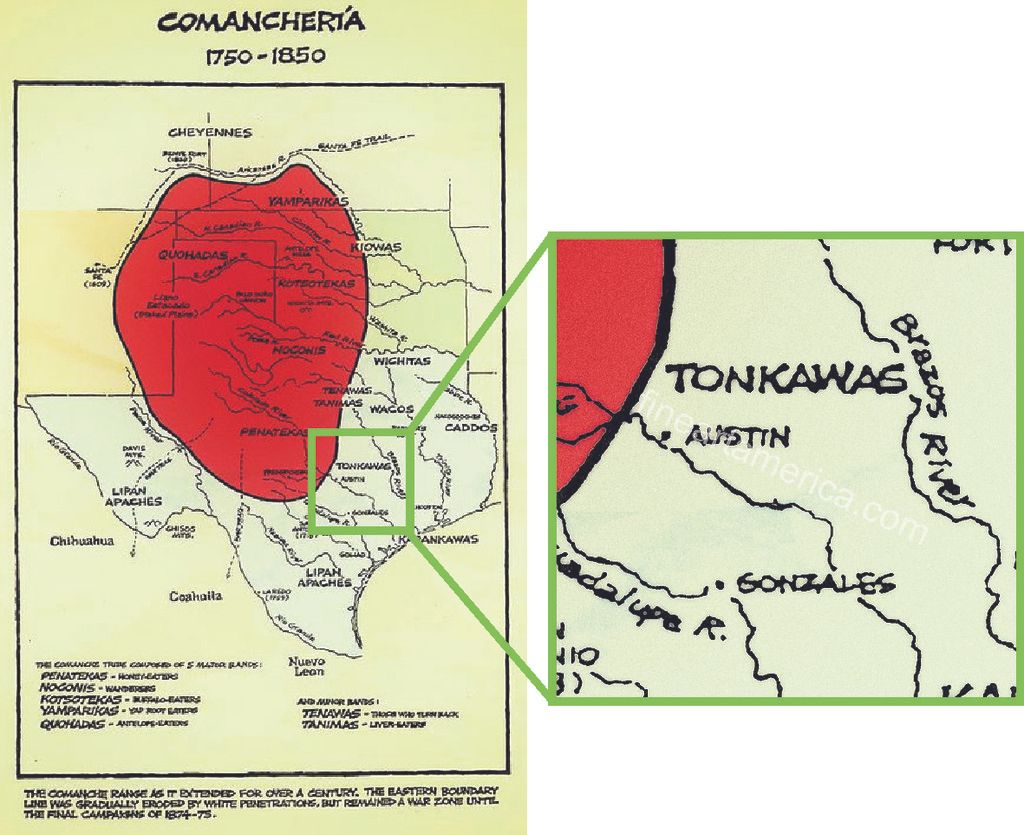LisaLT
Active Member
seriously????? what did he take now??Surprising news, Josh Gordon of the Patriots has once again violated the NFL substance abuse. This most likely ends his career. It has been stellar.

seriously????? what did he take now??Surprising news, Josh Gordon of the Patriots has once again violated the NFL substance abuse. This most likely ends his career. It has been stellar.
seriously????? what did he take now??

The region of Travis County was at the frontier of the Comancheria in 1830, but not within it. We know this because the Comanche regularly raided the area. Comanche didn't raid their own territory.Maybe Waco wasn’t Comanche territory, yet. The Comanches were overrunning other native tribes when the ‘Mericans Showed up and spoiled their party. What is now Austin - Travis County was most definitely Comancheria in 1830. There’s a really amazing historical marker on a little meadow on Shoal Creek under the 34th Street bridge, on the hike and bike trail. An extended family of white settlers was massacred by the Comanches there, in 1830.
Or maybe the Comanches preferred Austin to Wacko, too.

No mention of the Huaco Indians? You know, the tribe the town was named after?The region of Travis County was at the frontier of the Comancheria in 1830, but not within it. We know this because the Comanche regularly raided the area. Comanche didn't raid their own territory.
The Austin area in 1830 was inhabited by the Tonkawa, who were mortal enemies of the Comanche. In fact, the Tonkawa didn't have many friends because they practiced ritual cannibalism, so other tribes regarded them with disgust. However, they did ally themselves with the Texas Rangers against the Comanche. In a series of engagements in 1840 (the Council House Fight, the Great Raid, the Battle of Plum Creek), the Rangers and their Tonkawa allies pushed the Comanche west and virtually ended their raiding of Central Texas.

Covered about 4 pages back. See here.No mention of the Huaco Indians? You know, the tribe the town was named after?
Unfortunately based on recent posts “darn Baylor” may be insensitive toward native Americans. It’s all very confusing.What happened to Darn Baylor?
The region of Travis County was at the frontier of the Comancheria in 1830, but not within it. We know this because the Comanche regularly raided the area. Comanche didn't raid their own territory.
The Austin area in 1830 was inhabited by the Tonkawa, who were mortal enemies of the Comanche. In fact, the Tonkawa didn't have many friends because they practiced ritual cannibalism, so other tribes regarded them with disgust. However, they did ally themselves with the Texas Rangers against the Comanche. In a series of engagements in 1840 (the Council House Fight, the Great Raid, the Battle of Plum Creek), the Rangers and their Tonkawa allies pushed the Comanche west and virtually ended their raiding of Central Texas.

I thought Jesus' middle initial was H.
People are always calling me that.
Guy is battling some serious demons. Sad stuff.Surprising news, Josh Gordon of the Patriots has once again violated the NFL substance abuse. This most likely ends his career. It has been stellar.
If only he would have had a college coach that really tried to help him out and realize that football isn’t as important as lifeGuy is battling some serious demons. Sad stuff.
Joe2001Where the H E double L is RollToad?
Where the H E double L is RollToad?
The region of Travis County was at the frontier of the Comancheria in 1830, but not within it. We know this because the Comanche regularly raided the area. Comanche didn't raid their own territory.
The Austin area in 1830 was inhabited by the Tonkawa, who were mortal enemies of the Comanche. In fact, the Tonkawa didn't have many friends because they practiced ritual cannibalism, so other tribes regarded them with disgust. However, they did ally themselves with the Texas Rangers against the Comanche. In a series of engagements in 1840 (the Council House Fight, the Great Raid, the Battle of Plum Creek), the Rangers and their Tonkawa allies pushed the Comanche west and virtually ended their raiding of Central Texas.

Not boundaries recognized by the UN or international convention. /sarcasm font
Map is b.s. A figment of imagination. A drawing of boundaries that did not exist.
The Comanches raided anyone, whether in their territory or not, that was not Comanche.
They particularly regarded isolated white settlers as easy pickings.
Everyone that was in the Comanches’ whereabouts was their mortal enemy. They were an expanding power, and the established tribes in what is now Texas were between the devil and the deep blue sea— the Comanches from the northwest and the white frontiersmen from the east.
If the Comanches had expanded before white settlers arrived and hit the Karancoas (sp?) that might have been interesting
So — read your Ferrinbach (sp?) DP. He understands more about natives in our area than you do.
I believe they were vanquished by the fugawee Indians.No mention of the Huaco Indians? You know, the tribe the town was named after?
